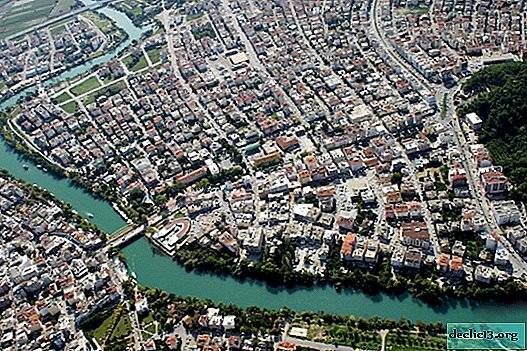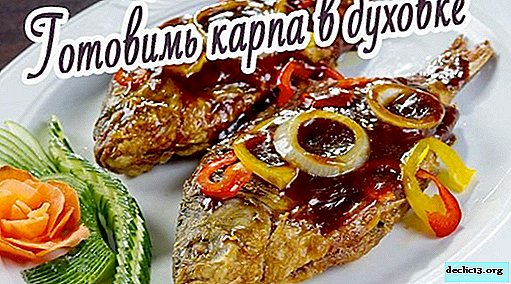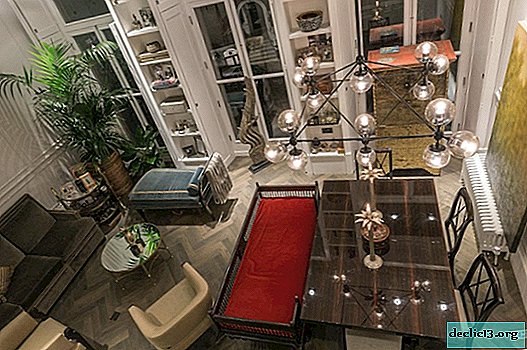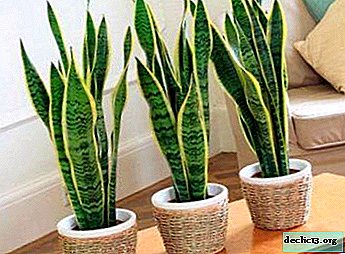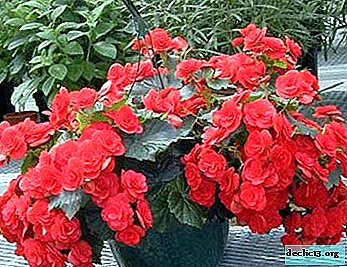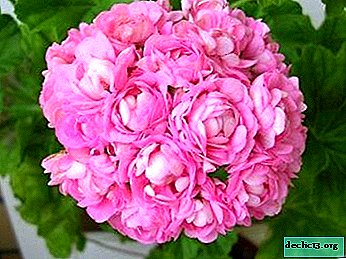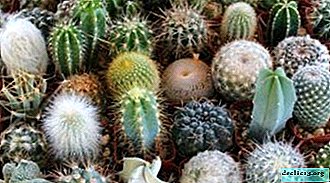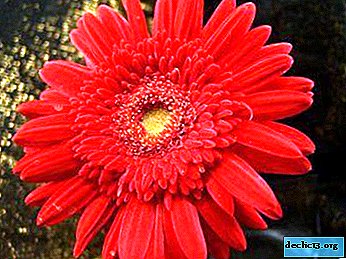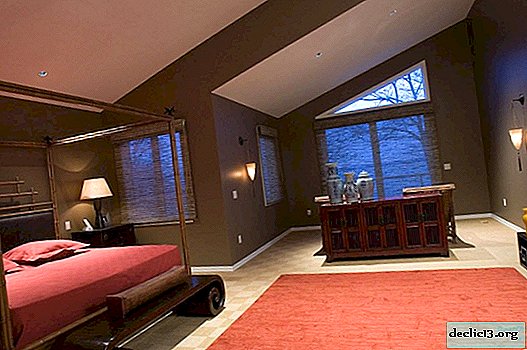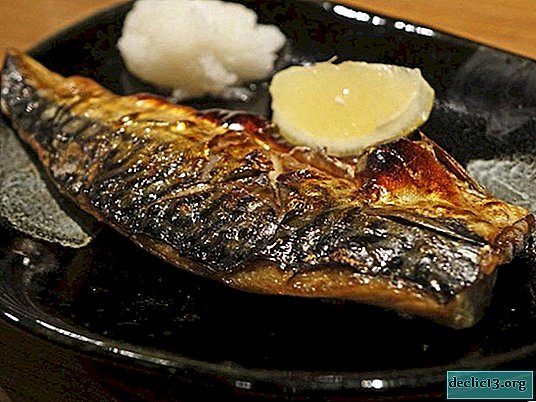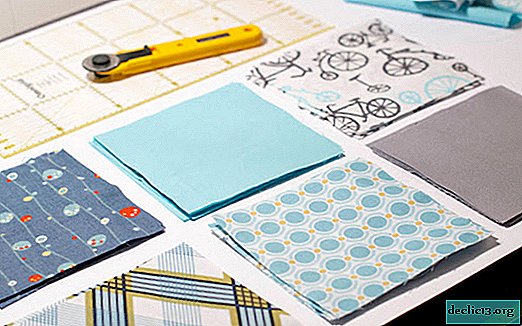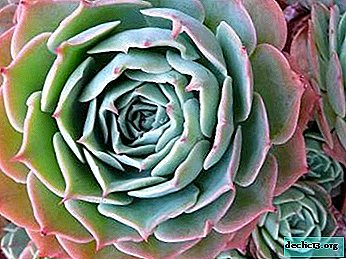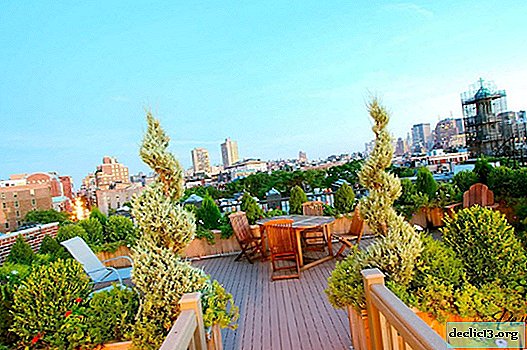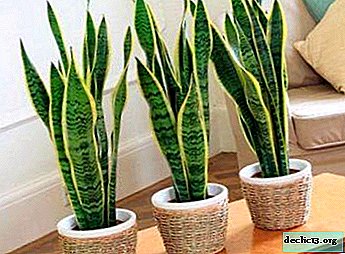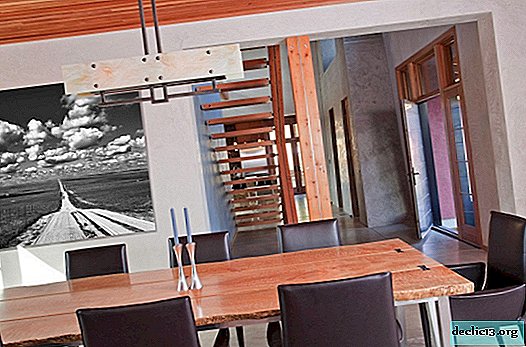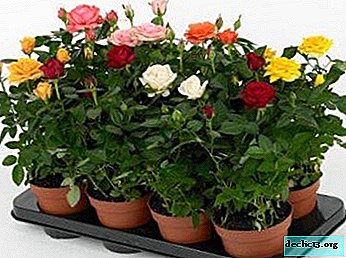Rainbow on the flowerbed - petunias of yellow, red, black, blue and other colors and shades
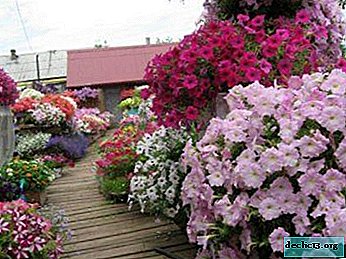
A cheerful cascade of bright colors? Equal strict beds? Garden flower garden in romantic white? Or the luxury of baroque dark terry petals? Yes, and yes again. All this is a hybrid petunia, so beloved by flower growers and landscape designers around the world. Petunia became one of the most common floriculture crops due to its resistance to drought and a long flowering period (up to 6 months).
The motley beauty has become one of the primary flowers in urban flower beds. Among other things, petunia flowers have a recognizable delicate smell. And yet, such a large-scale distribution of petunia received, first of all, due to the variety of shapes and colors.
Botanical Description
Petunia has erect or creeping shoots, depending on the variety, from 20 cm to 1 meter high. Leaves are diverse in shape and size, pubescent, like stems. The flowers are large, with five petals. They have a recognizable funnel shape and can be either simple or terry. The culture has a strong recognizable smell. The fruit is in the form of a bivalve box with small seeds.
Distribution History: From Wild Culture to World Conquest
On a note. The historical homeland of the plant is South America. Petunia first came to Europe only in the 18th century. And then, in the form of a herbarium. The first variety of petunia, which the Old World meets "personally", becomes Petunia intergrifolia, which has a purple color of flowers. But this is already happening in the 19th century.Later in South America, other varieties are discovered, both annual and perennial. A little later, their selection begins. The new variety is called "hybrid petunia" or "garden petunia." Today, the cultivation of petunias is almost two centuries.
To create new hybrids, many tools are involved, from traditional breeding methods to genetic engineering, up to interspecific crosses. Petunia acquires terry petals, large flowers, cascading varieties with long shoots and, of course, a variety of colors. It is on the choice of colors that we dwell on in more detail.
Colors: description and photo
Green
Green flowers look exotic and successfully fit into any garden composition.. Regardless of whether your flower garden shines with a variegated variety of colors, or whether you adhere to a strict color scheme, green petunias will be an excellent option. Read about petunia compositions in the garden here.
Sophistry Lyme Green
Traditional funnel-shaped flowers with a slight green tint.

Green Age Lime
Terry variety with medium-sized flowers.

Reds
They can look bright and cheerful or strictly and solemnly, depending on the shade.
Ramblin Red
Ampelic variety. A cache-pot with a lush cascade of light scarlet flowers creates a bright summer mood. A great option to decorate a balcony or summer terrace.

Learn more about the Ramblin variety here.
Duo red
Neat plants with large dense flowers. Baroque mood.

Cinderella
Small-flowered mini-petunia. Compact bushes with a large number of medium-sized flowers. It forms a dense spherical bush - ideal for planting in a pot. If you are interested in small-flowered varieties, you can read about them here, and about mini varieties we wrote here.

Pink
This color is closest to the original color of the wild species, hence the many hybrids of a pink hue. A wide palette from pale pink to rich purple tones.
Piruet rose
Large-flowered terry hybrid with uneven color, brighter to the center and lighter to the edges of the petals. Large heavy flowers have an almost perfect spherical shape.

Picobella Pink Star
Saturated pink petals with white stripes forming a star. Flowers resemble bright caramels.

Pink sky
Delicate flowers of even light pink color. Petals of the correct form, flowering uniform. It looks gentle and airy.

Orange
Orange is not typical of this crop. The modern level of selection allows us to bring hybrids including this color, but their choice is not so wide.
Gioconda
Ampelic variety. It is characterized not only by the saturated orange color of the flowers, but also by the stable form of the cascade - strong stems can reach a length of up to 100 cmwhile maintaining a high density of colors.

Description and photos of the hybrid variety Petunia F1 Gioconda you will find in this article.
Amore myo orange
Saturated orange flowers with a pronounced white core. The features of the variety include a light jasmine flavor.

Blue
Reference. Varieties of this shade usually have a color either closer to white or saturated blue.Especially spectacularly blue petunias look like a large, uniform meadow.
Aladin
Compact plants with watercolor pale blue flowers with corrugated edges.

Daddy blue
Large ash-blue flowers with dark veins forming a star.

Blue sky
Delicate flowers of simple shape resemble blue bells. The color is more intense towards the edge of the petals and lighter towards the core.

Blue
It looks advantageous both in combination with other shades of petunia and with other colors. Especially for blue petunias are white and bright yellow shades.
Limbo Blue
The variety is saturated ink blue.

Hulahup Blue
Large flowers of unusual color. Vividly blue with a white stripe at the edges, petunias of this variety resemble Spanish dance dresses.

Belinda
Terry variety with elegant star-shaped flower. Petals are painted in an even bright blue.

Hybrid white
There are many varieties, since white is also characteristic of wildlife.
Explorer
Ampelic variety with simple pure white flowers and dark green foliage. Grace and restraint. Other ampel varieties and their care can be found here.

Surfinia Double White
Long shoots, humbled by terry scented flowers.
On a note. Ampel hybrids of the variety Surfinia of different shades remain their popularity for many years.But of the whole variety, it was white, one of the natural varieties of the flower, that earned the special love of flower growers.

You will learn about all varieties and features of care for Surfinia in this material.
Eagle White
For lovers of compact varieties. Small bushes with large white flowers.

Yellow
Note! Ideal for lovers of flowers in sunny shades and a useful purchase for connoisseurs of flowers with dark colors. Next to light colors, dark varieties stand out especially strongly.For this purpose, about a quarter of the total number of seedlings can be added to the flower garden of white or light yellow petunias. They will not distract attention, but will help to emphasize the individuality of dark shades most fully.
Avalanche Yellow Star
Ampelic variety with friendly flowering. Petals of delicate yellow color, brighter to the center and lighter to the periphery.

Dolce limoncello
Large-flowered variety with bright edges and pronounced veins.

Sunny summer
Flowers with an even bright yellow color. It resembles pumpkin flowers in appearance.

Dark
To date, there are many connoisseurs of flowers with dark colors in the world.
On a note. Black is not characteristic of almost any kind of flowers on the planet - a real challenge for breeders. In pursuit of the darkest color of petunia was no exception for experiments.Black cherry
Saturated cherry color, close to black. Smooth coloring.

Black velvet
The velvet texture of the petals makes the shade visually more saturated. The variety is characterized by early flowering.

Purple
Violet is another natural color of petunia, along with white and pink. Graduation for every taste - from pale lilac to dark violet.
Bravo Lavender
Large flowers of gentle even lilac color. Ideal in ensemble with pink or yellow flowers.

Plum vane
A cascading variety with a beautiful bush shape and large flowers with bright veins. There is also a terry variety, Plum Wayne Terry. You can read about cascading petunias here, and we wrote about terry petunias in this article.

Violet Dream
It has a simple flower shape and a saturated ink-violet color. The color is uniform.

Plant care
As already mentioned, petunia is famous for its unpretentiousness. However, to get the best quality colors, you need to follow simple rules.
- Disembarkation.
It is better to plant petunia in open ground in the form of seedlings when spring frosts pass. With proper experience, seedlings are not difficult to grow from seeds on their own, or you can buy ready-made seedlings.
Important! For the full development of plants, the distance between the bushes should be at least 20 cm. - Soil and lighting.
Prefers nutritious woody-sandy neutral soils and open sunny places. If these conditions are not met, most likely, petunia will still take root, but a lack of food and sun will affect the quality of flowering.
- Watering and feeding.
Moderate watering, nutrient fertilizers to maintain continuous flowering. The culture easily survives drought, but water stagnation is not worth it - petunias cannot tolerate this.
- Protection against pests and diseases.
Preventive treatment against powdery mildew is desirable, treatment from pests - if necessary.
Petunia is perfect for arranging both a grandiose garden flower garden and a small planter on the balcony. The choice of varieties and colors is great, and everyone will find something to their taste. Let your garden play with bright colors!

